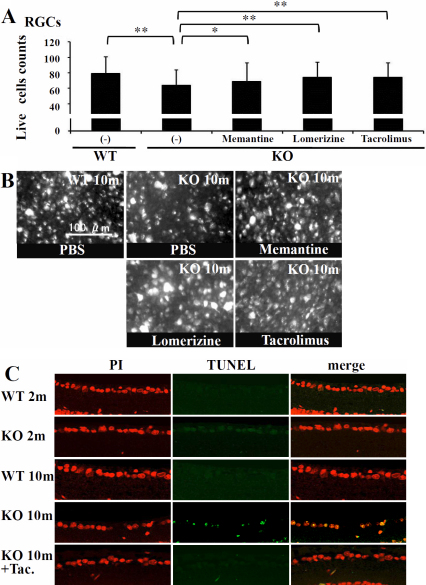Figure 3.
Neuroprotection by various chemical reagents in p50-deficient mice. A: Bar graph shows RGC survival at 8 months old p50-deficient (KO) and wild-type (WT) mice. Values represent the mean *±SD (n=each 5 11). RGC numbers of KO mice were significantly decreased (**p<0.0001). However, the chronic administration of lomerizine or tacrolimus to KO mice for 6 months resulted in an increase in surviving RGC numbers (**p<0.0001). The chronic administration of memantine to KO mice for 6 months mildly protects RGCs from neurotoxity (p=0.015). The number of surviving RGCs was counted using retrograde labeling methods. Data was analyzed by Bonferroni correction. B: Photographs show a high-power view of retrograde-labeled RGCs of flat mounts derived from KO and WTmice at 8 months of age. Scale bar=100 μm. C: TUNEL staining using the Apop Tag fluorescein labeled kit (Millipore) plus tissue sections from 2-month-old wild type (WT) mice and p50-deficient (KO) mice, and 10-month-old wild type (WT) mice and KO mice with and without chronic administration of tacrolimus. TUNEL staining was observed in the GCL of 10-month-old KO mice, but not age-matched KO mice treated with tacrolimus (Tac.) or WT mice.

